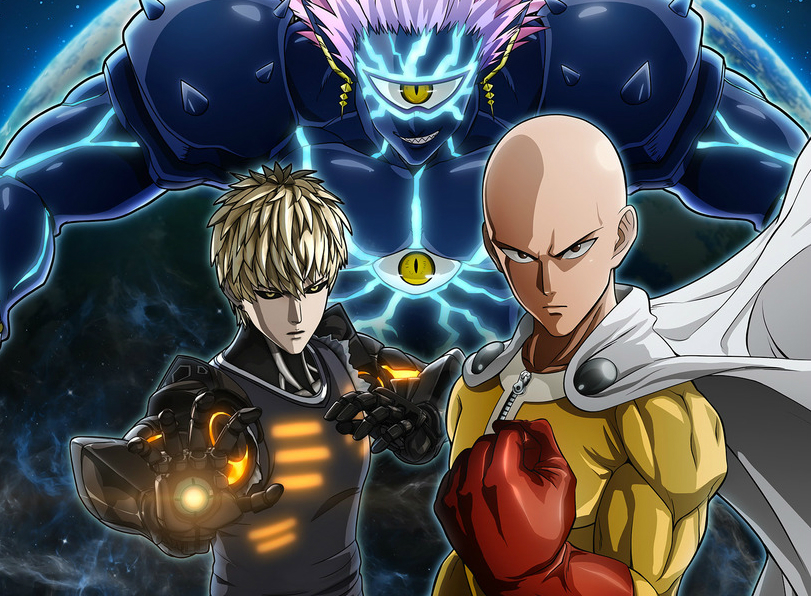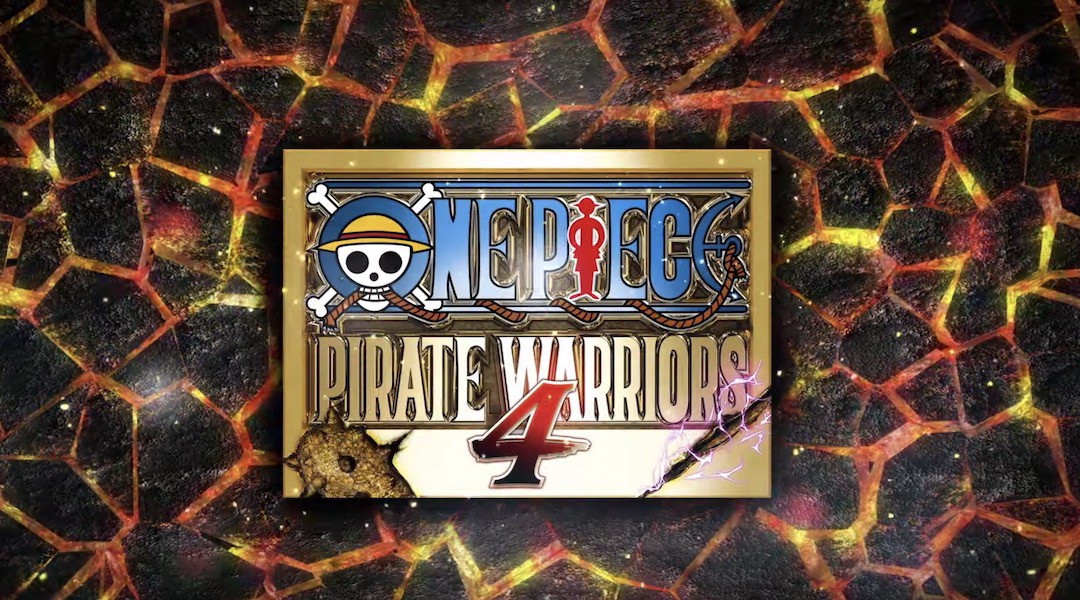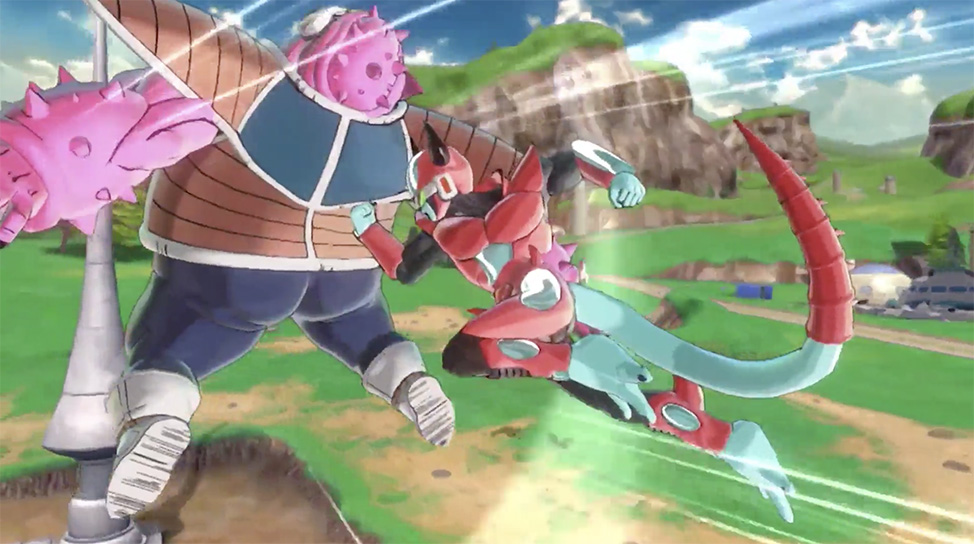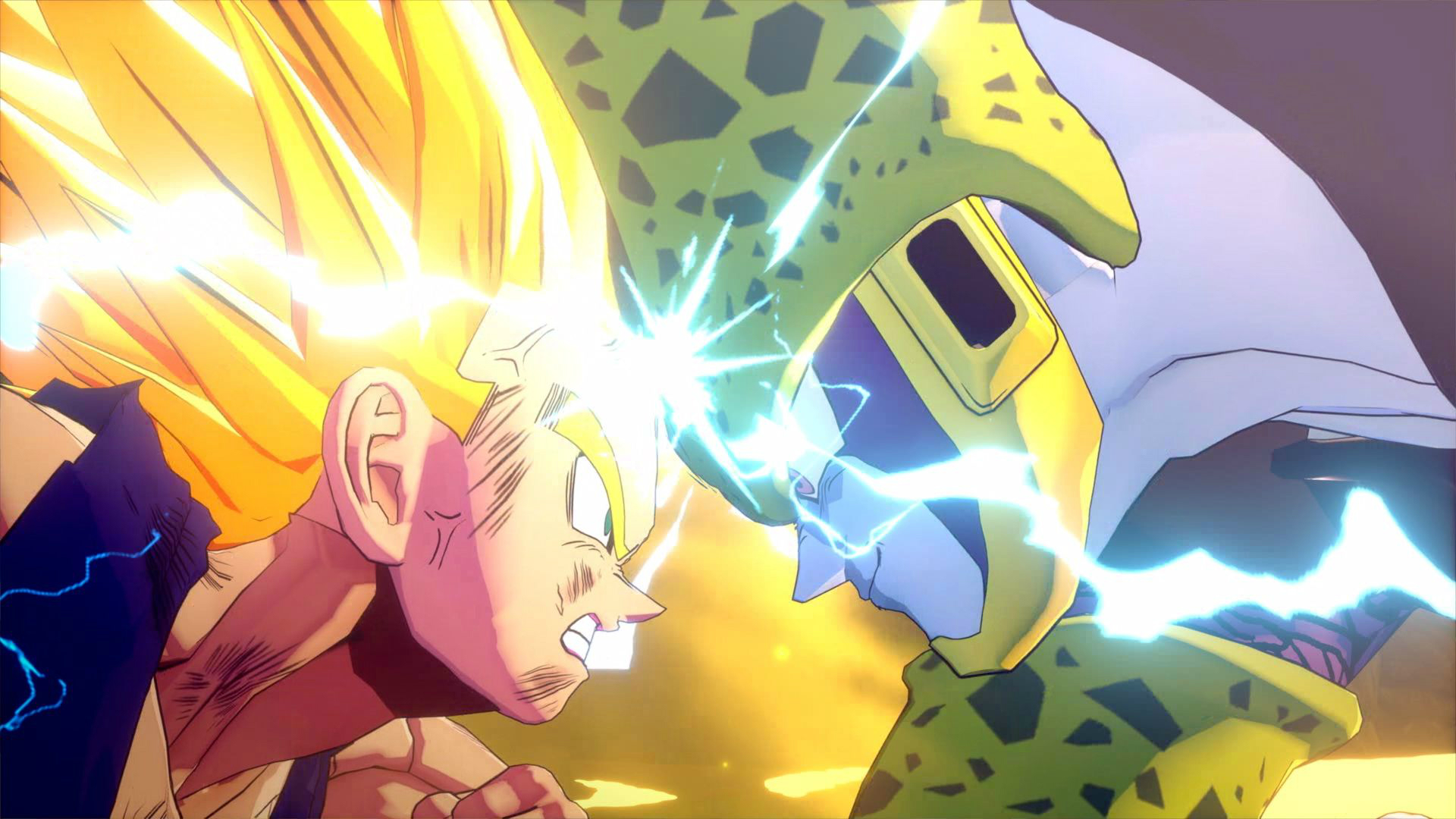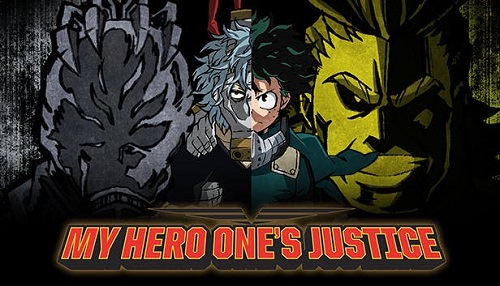
In the last few years, there are few anime or manga series that have skyrocketed to success as quickly as My Hero Academia. So, it wasn’t a surprise to see Bandai Namco announce that the franchise would be receiving the fighting game treatment that so many other successful animes have received from the company. Through the Naruto Ultimate Ninja, One Piece: Pirate Warrior and Dragon Ball Z Budokai/Tenkaichi series, Bandai have built a reputation for grandiose and bombastic fighters that stay true to their source material. Unfortunately, My Hero One’s Justice does not reach these same lofty heights, with a seemingly constrained budget limiting its bombast and forcing chunks of stories/fights to be skipped.
With any game in the fighting genre, there is a premium to be placed on controls and balance, with poor controls or unbalanced fights quickly leading to a frustrating experience. I would be hard pressed to call the controls in My Hero One’s Justice anything further than average. While nothing is broken or unplayable from a controls perspective, the character movements feel slow and unresponsive. There is a noticeable gap between pushing an analogue stick and your character moving that makes them feel sluggish, even though a lot of these characters are known themselves for incredibly speed and agility. For general controls, the game is fairly standard for a 3D fighter, with three dedicated attack buttons, and guard/dash/jump buttons. Beyond these general attacks, you also have the ability to launch counter attacks that are uninterrupted by regular attacks, unblockable throws, assist attacks from teammates and big, flashy special attacks. There are no complex button press combos or motions to memorise, allowing for a low entry level for newcomers, with depth coming from timing, positioning and chaining attacks. These systems also run into some issues with inconsistencies, with some of the supposedly uninterruptable counter attacks being interruptible and the requirement for your character to come to a complete stop from general movement prior to attacking, otherwise a counter attack is always used. The implementation of the most powerful super attacks is also frustrating, requiring 3 buttons to be pressed simultaneously. I had multiple occasions where the game performed one of the two weaker special attacks (each of which requires 2 of the 3 buttons used for the super attacks) instead of my intended attack. It feels like some more time was needed to go into the controls of My Hero One’s Justice to get it feeling up to the standards of the fighting genre.
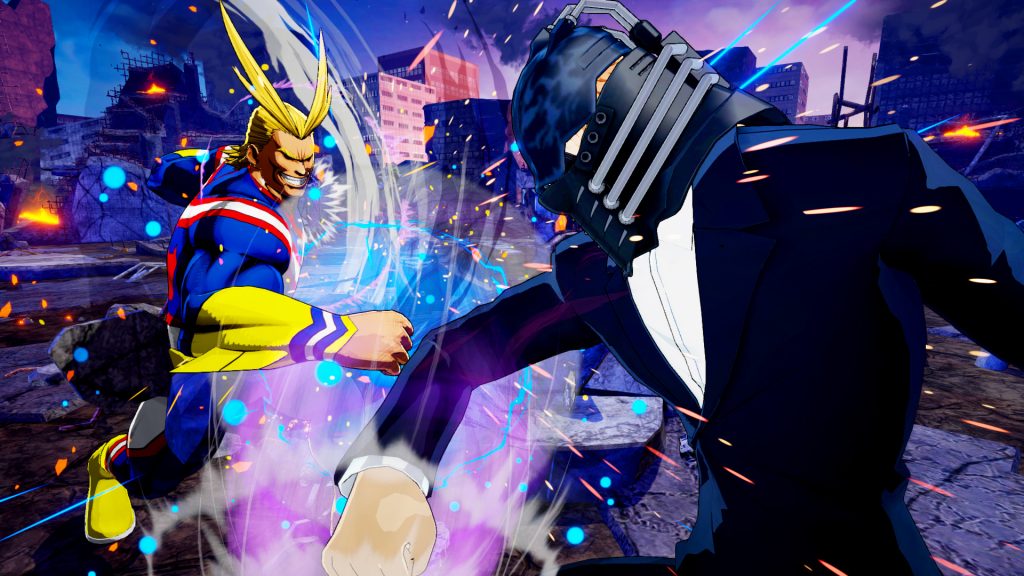
While the controls and mechanics are the base of My Hero One’s Justice, the real meat of the game comes in the different modes of play available. Along with the standard local and online (ranked/unranked) modes, there are two separate single player modes that are both interesting in their own ways. The first of these is the story mode, which faithfully follows the anime storyline – except for the fact that it skips all of the character building done in the first season and avoids well known battles due to having characters missing from the roster. One of the reasons My Hero Academia is so successful is that it spends great amounts of time on exposition and character building, working to create an attachment to the series’ young protagonists and showcasing their growth. You lose out on backstories like Todoroki’s issues with his father affecting his use of his own powers, Uraka’s fight to reach the same level as her friends and become a competent fighter in her own right and almost the entire backstory surrounding Muscle, just to name a few. To properly do the characters and story justice would have required many more characters from the anime, which would have also increased the scope and therefore budget of the game.
The story sequences that were selected to be in the game have been taken directly from the My Hero Academia anime, with cropped screenshots seemingly taken directly from the anime to populate the game’s comic book style story scenes before and after battles. Beyond these sequences, there are a handful of cutscenes rendered using the in-game models, however these scenes often look somewhat off, as the in-game animation and collision models mean that clear contact isn’t made in these scenes. Along with this, effects present in the anime and manga versions of these are missing, such as the tornado generated by All Might’s United States of Smash attack. The real issue, however, is in the character balancing within this story mode. For the majority of it you’ll blow through enemies with little to no resistance, but a handful of battles are so incredibly difficult that they just feel unfair. The real issue though, is why they’re difficult. Which is to say, that in certain battles in the game, the damage you do is halved or quartered, while the enemies damage output is doubled or more. A single combo in some of these battles (most notably the Muscle fight in the Hero’s campaign and the final All Might battle in the villains campaign) can wipe out a third of your health, while a perfectly executed combo or super attack from yourself will barely wipe off an eight of theirs. It just feels unfair and cheap, and destroys any momentum the story builds. Overall, the story mode of My Hero One’s Justice is serviceable, but pales in comparison to its source material and other games in the genre.
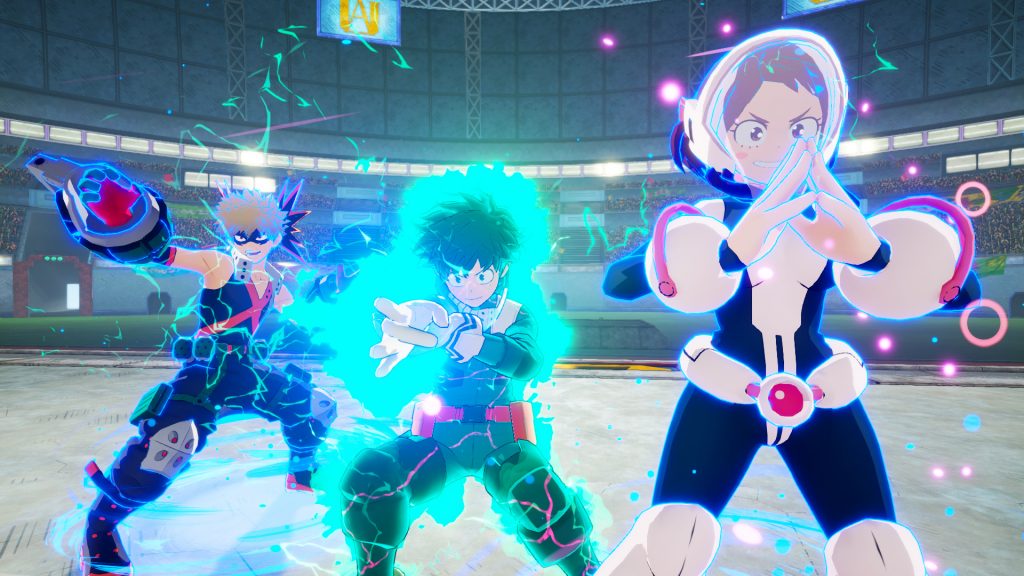
The second single player mode present in My Hero One’s Justice, and my favourite is Mission mode. In this mode, your 3 selected characters will need to progress through a small 2D map, completing quests and battles along the way. Damage dealt to your characters persist between battles, meaning that you can fail out if you’re not careful and allow all of your characters to be KO’d. To combat this, you’ll earn a range of items exclusive to this mode as you progress, allowing you to heal your team, increase your scores, start with charged special meters and more. Upon completing the map you’re given a score based on your performance in combat, the number of items you used and more, pushing you to repeat maps to get better and better scores. It’s a fun and engaging mode that can easily suck up plenty of your time. The final option on your mode select screen is Training which, despite its name, is not at all a training mode and is simply a practice room for you to try out your characters.
The one way that My Hero One’s Justice truly matches with its source material is in its graphical style. The cel-shaded style used by the game is rendered well and characters are instantly recognisable. Each character’s attacks are rendered to match their Quirks, with a lot of bombast and dramatic effects to them. However, this also means that certain characters, such as Hero Killer Stain, are less interesting visually, compared to flame users like Dabi and Todoroki. What results is battles that can get quite visually busy, with massive effects filling the screen, especially if you’re using a character with flashier abilities like Bakugo. To allow for these effects to not get completely overwhelming, the anime’s battlefields have been expanded into wide open arenas. They still look exactly like they do in the anime, but have been widened and high ceilings, allowing for stunning long-range attacks and aerial battles. There are also a massive range of customisation options you unlock by playing the single player modes and purchase using in-game currency, which allow you to completely change the visual look of your character. All the customisation options are based off in-universe items and you can make some pretty wild looking characters if you put your mind to it.
I’ve become a massive fan of My Hero Academia since the manga begun being translated into English and since the anime began streaming on Western platforms, so I definitely had some expectations coming into My Hero One’s Justice. Unfortunately, the game neither stands as a good introduction to newcomers or a good celebration of the franchise for old fans. The control scheme can be frustrating at points, the story mode is patchy at best and its balance and difficulty fluctuates wildly with little reason. Battles are fun, filled with great visual effects, and the game is a great visual representation of the franchise. My hope is that Bandai Namco stick with the franchise and build upon it, because while there is so much potential in it, My Hero One’s Justice is a ways off from reaching that potential.
- Visual style perfectly matches the source material - Battles are filled with great visual effects - Customisation options are silly and fun
- Game assumes you are already familiar with the characters - Lack of subtitles or translation for in-match/victory quips by characters - Balancing in story mode fluctuates wildly - Control scheme causes incorrect inputs to be easily performed - Movement feels sluggish and unresponsive

